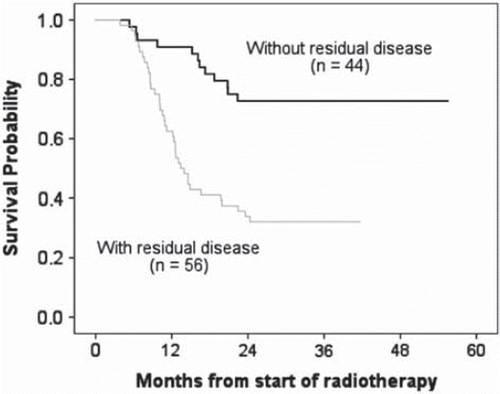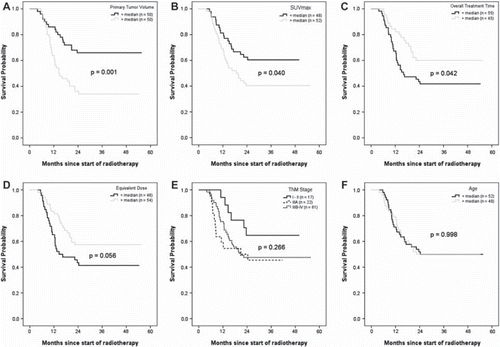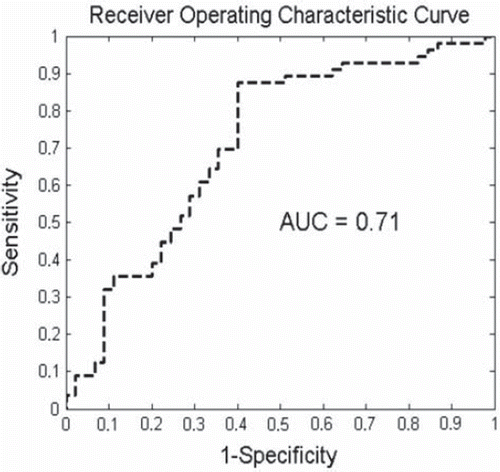Figures & data
Table I. Patient characteristics and their association with post-RT outcome in univariate analysis. Comparison of groups with residual disease and with complete metabolic response.
Figure 1. Kaplan-Meier estimates of overall survival of patients with residual metabolically active areas and with complete metabolic response on the post-radiotherapy PET-CT scan. Patients with residual metabolically active areas had significantly worse survival (p = 0.0001).

Figure 2. Survival among patients with advanced NSCLC for selected variables. For continuous variables, the cut-off value to stratify the patients was defined at the variable median. Shown are Kaplan-Meier curves for GTVprimary, SUVmax, OTT, EQD2, T, TNM stage and age. In panel E, patients with stage I and II were grouped together due to the small number of cases. Stage IV (1 patient) was grouped with Stage IIIB.


